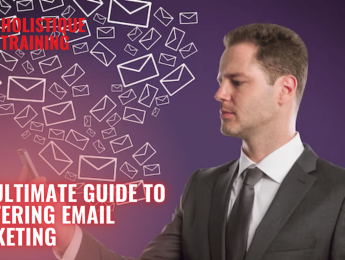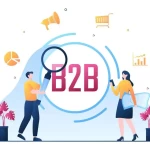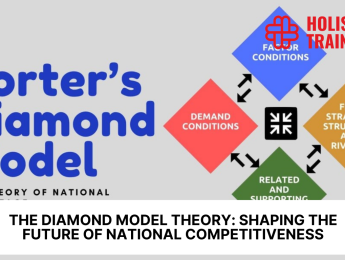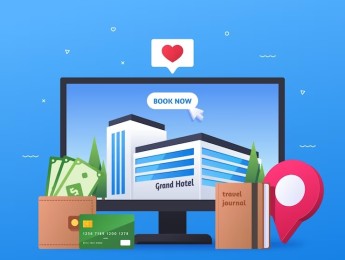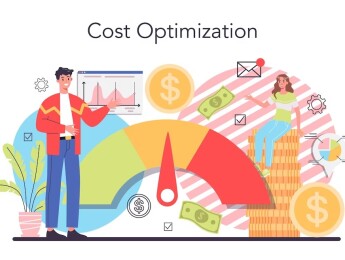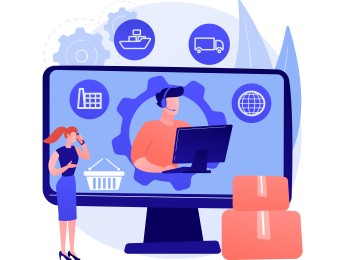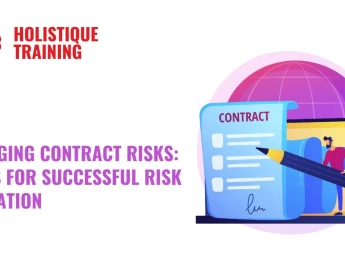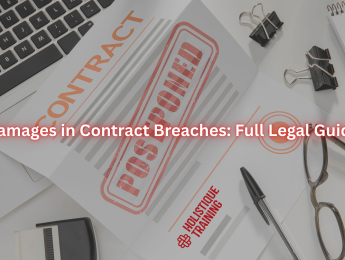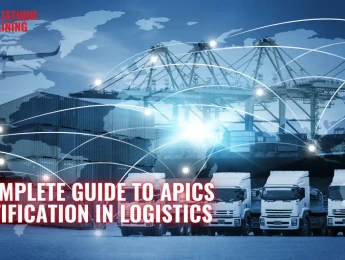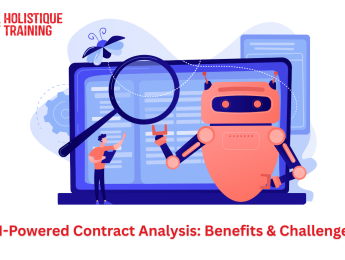- Table of Contents
- Introduction
- What Is Email Marketing? A Brief History of Email
- Is Email Marketing Still Relevant Today?
- Email Marketing Types
- 1. Promotional Emails
- 2. Transactional Emails
- 3. Newsletters
- 4. Drip Campaigns (Automated Email Sequences)
- 5. Welcome Emails
- 6. Abandoned Cart Emails
- 7. Re-engagement Emails
- 8. Educational Content Emails
- 9. Survey and Feedback Emails
- 10. Product Recommendations
- Email Marketing Glossary
- Benefits of Email Marketing
- 1. Direct Communication
- 2. Cost-Effective
- 3. Personalisation
- 4. Measurable Results
- 5. Automation
- 6. Global Reach
- 7. Enhanced Engagement
- 8. Easy Sharing and Forwarding
- 9. Conversion Opportunities
- 10. Versatility
- Email Marketing Best Practices and Tips
- 1. Craft Compelling Subject Lines
- 2. Segment Your Audience
- 3. Prioritise Mobile Optimisation
- 4. Provide Valuable Content
- 5. Test and Iterate
- 6. Maintain Consistency
- 7. Pay Attention to Design
- 8. Include Clear Call-to-Actions (CTAs)
- 9. Monitor and Analyse Results
- 10. Respect Subscriber Preferences
- How to Build an Email Marketing List
- 1. Create Opt-In Opportunities
- 2. Utilise Landing Pages
- 3. Use Social Media
- 4. Host Webinars or Events
- 5. Content Upgrades and Lead Magnets
- 6. Guest Posting and Partnerships
- 7. Referral Programmes
- 8. Use Exit-Intent Popups
- 9. Collect Emails Offline
- 10. Provide a Clear Value Proposition
- The Best Tools for Email Marketing
- Mailchimp
- Constant Contact
- HubSpot
- ConvertKit
- Conclusion
Introduction
Amid the rapid shifts of the digital age, where TikToks and posts flash by in an instant, there exists a communication stalwart that defies trends and maintains its potency: email marketing. In a world captivated by social media's allure and instant messaging's brevity, email continues to stand tall as a direct and personal conduit for businesses to reach their audiences. This blog post beckons you to explore the nuanced realm of email's marketing potential. From its intriguing historical evolution to its multifaceted present-day applications, we'll embark on a journey that demystifies this art and equips you with insights, tactics, and strategies to leverage email marketing effectively in the dynamic landscape of today's digital marketing world.
What Is Email Marketing? A Brief History of Email
At its core, email marketing is the practice of sending targeted messages to a group of individuals via email with the goal of promoting products, services, offers, or information. Unlike random or unsolicited emails, effective email marketing is highly targeted and personalised, aiming to engage recipients and foster meaningful interactions.
Before diving into the specifics of email marketing, let's take a quick trip down memory lane to explore the roots of email itself. The first email was sent in the early 1970s by Ray Tomlinson, who used the "@" symbol to separate the user's name from the host computer's name. What started as a simple text-based communication tool among researchers soon transformed into a global means of connecting people and organisations.
Is Email Marketing Still Relevant Today?
In the face of newer communication methods, you might wonder if email marketing has lost its relevance. On the contrary, email remains a powerful tool for businesses to engage with their audience. With a worldwide email user base of over 4 billion, it provides a direct and personal channel to connect with customers. Moreover, email allows for targeted messaging and segmentation, ensuring that the right content reaches the right people.
Email Marketing Types
Email marketing is a versatile strategy that encompasses various types of emails, each serving a distinct purpose in engaging subscribers, nurturing relationships, and driving conversions. Let's delve into the different types of email marketing campaigns and how they contribute to your overall marketing goals:
1. Promotional Emails
Promotional emails are designed to showcase products, services, offers, or deals. These emails are often time-sensitive and aim to encourage recipients to take immediate action, such as making a purchase or redeeming a discount code. Crafting compelling subject lines and clear call-to-action buttons is crucial to maximise the impact of promotional emails.
2. Transactional Emails
Transactional emails are triggered by specific actions taken by subscribers, such as making a purchase, signing up for an account, or resetting a password. While primarily informational, these emails also provide opportunities for cross-selling or upselling related products and services. Transactional emails are often opened and engaged with at higher rates, making them valuable touchpoints for communication.
3. Newsletters
Newsletters are regular email updates that provide subscribers with valuable content, industry insights, news, and updates related to your brand. Newsletters establish your authority in your niche, keep subscribers informed, and maintain ongoing engagement. To make newsletters effective, focus on delivering a mix of informative and entertaining content that resonates with your audience's interests.
4. Drip Campaigns (Automated Email Sequences)
Drip campaigns are automated sequences of emails strategically scheduled to guide subscribers through a predefined journey. These sequences can serve various purposes, such as onboarding new users, nurturing leads, or re-engaging inactive subscribers. Drip campaigns offer personalised experiences, nurturing relationships and gently nudging subscribers toward desired actions.
5. Welcome Emails
Welcome emails are the first impression your brand makes on new subscribers. These emails thank them for signing up, set expectations for future emails, and often include a special offer or resource as a token of appreciation. A well-crafted welcome email can set the tone for a positive subscriber experience and encourage further engagement.
6. Abandoned Cart Emails
Abandoned cart emails target individuals who have added products to their online shopping carts but haven't completed the purchase. These emails remind subscribers about their unfinished transaction and often include a persuasive call-to-action to encourage them to finalise the purchase. Abandoned cart emails can significantly recover potential revenue that might have otherwise been lost.
7. Re-engagement Emails
Re-engagement emails are designed to win back inactive subscribers or customers who haven't interacted with your emails or brand for a while. These emails aim to reignite interest by offering new content, exclusive offers, or reminding them of the value your brand provides. Re-engagement campaigns can help clean your list by removing uninterested or disengaged subscribers.
8. Educational Content Emails
Educational content emails focus on delivering valuable information, tips, tutorials, or how-to guides to your subscribers. These emails position your brand as an industry expert and provide actionable insights to your audience. Educational emails strengthen relationships, foster trust, and keep subscribers engaged even when they're not in a buying mindset.
9. Survey and Feedback Emails
Survey and feedback emails involve reaching out to subscribers to gather insights, opinions, and feedback about their experiences with your brand. These emails show that you value their input, and the data collected can help you tailor your products, services, or content to better suit their preferences and needs.
10. Product Recommendations
Product recommendation emails leverage data about subscribers' past interactions and behaviours to suggest products or services they might be interested in. These emails personalise the shopping experience and increase the chances of driving additional purchases based on individual preferences.
Table 1: Types of emails
Email Type | Description |
Promotional Emails | Showcase offers, encourage action with compelling content. |
Transactional Emails | Provide info, offer related products/services. |
Newsletters | Share updates, insights, and engage with valuable content. |
Drip Campaigns | Automate personalised journeys for subscribers. |
Welcome Emails | Set tone, thank new subscribers, and offer incentives. |
Abandoned Cart Emails | Recover lost sales by reminding about unfinished orders. |
Re-engagement Emails | Re-engage inactive subscribers with fresh content. |
Educational Content Emails | Share industry insights and actionable tips. |
Survey and Feedback Emails | Gather input to improve offerings and experiences. |
Product Recommendations | Personalise shopping with tailored product suggestions. |
Email Marketing Glossary
Before delving deeper, let's familiarise ourselves with some common email marketing terms:
Open Rate: The percentage of recipients who open an email.
Click-Through Rate (CTR): The percentage of recipients who click on links within an email.
Conversion Rate: The percentage of recipients who complete a desired action after interacting with the email.
Bounce Rate:The percentage of emails that were not successfully delivered to recipients' inboxes.
Segmentation: Dividing the email list into smaller groups based on specific criteria, allowing for more targeted campaigns.
Benefits of Email Marketing
Email marketing holds a significant position in the minds of marketing leaders, with 47% recognising it as among the most impactful channels for driving sales conversions, according to Salesforce. This enduring popularity is underscored by a range of benefits that it offers to businesses of all sizes. Let's delve deeper into these advantages:
1. Direct Communication
Email marketing provides a direct line of communication between your business and your audience. Unlike social media or other platforms, where algorithms can influence visibility, emails are sent directly to subscribers' inboxes. This personalised connection allows you to speak directly to your audience, building a sense of intimacy and trust.
2. Cost-Effective
Compared to traditional forms of advertising, email marketing is incredibly cost-effective. There are no printing or postage costs involved, and the expenses associated with designing and sending emails are minimal. This makes it an ideal solution for businesses with limited marketing budgets, allowing them to reach a wide audience without breaking the bank.
3. Personalisation
One of email marketing's greatest strengths is its ability to deliver tailored content to individual subscribers. By segmenting your email list based on factors such as demographics, purchase history, or engagement level, you can send highly relevant content to each group. This personalisation enhances the subscriber experience and increases the likelihood of engagement and conversions.
4. Measurable Results
Unlike traditional marketing methods where it's challenging to measure the effectiveness of campaigns, email marketing provides a wealth of metrics that allow you to gauge the success of your efforts. You can track open rates, click-through rates, conversion rates, and even understand which links within your emails are performing the best. This data-driven approach empowers you to refine your strategies for optimal results.
5. Automation
Email marketing automation is a game-changer for businesses looking to streamline their processes. Automated drip campaigns, triggered by specific user actions or dates, allow you to send a series of emails to guide subscribers through a predefined journey. This could be an onboarding sequence for new customers or a re-engagement campaign for dormant subscribers. Automation saves time, ensures consistent communication, and nurtures leads without constant manual intervention.
6. Global Reach
The internet has made the world a much smaller place, and email marketing takes full advantage of this connectivity. With the click of a button, you can send your message to subscribers all around the world, breaking down geographical barriers and allowing you to tap into diverse markets.
7. Enhanced Engagement
Emails have the power to create a deeper level of engagement compared to other marketing channels. Subscribers willingly provide their contact information, indicating an existing interest in your products or services. By delivering valuable content, you can foster a stronger connection, leading to higher levels of customer loyalty and advocacy.
8. Easy Sharing and Forwarding
Emails are inherently shareable. If a subscriber finds your content valuable, they can easily forward the email to friends, family, or colleagues. This word-of-mouth sharing can significantly expand your reach and introduce your brand to new potential customers.
9. Conversion Opportunities
Email marketing doesn't just stop at engagement; it's a powerful tool for driving conversions. Whether you're promoting a limited-time offer, a new product launch, or a webinar, email campaigns provide a direct path for recipients to take action, whether it's making a purchase, signing up for an event, or downloading a resource.
10. Versatility
Email marketing isn't limited to a specific type of business or industry. Whether you're an e-commerce store, a nonprofit organisation, a B2B service provider, or a content creator, email marketing can be tailored to suit your needs. The versatility of email marketing campaigns allows you to creatively engage your audience no matter what your niche.
In a world of ever-evolving digital marketing strategies, email marketing's resilience and adaptability shine through. Its unique blend of personalisation, direct communication, and data-driven insights make it a cornerstone of modern marketing efforts. By harnessing the benefits outlined here and incorporating them into your strategies, you can unlock the full potential of email marketing to foster meaningful relationships and drive business growth.
Email Marketing Best Practices and Tips
Crafting and executing a successful email marketing campaign requires more than just sending messages to your subscribers. It involves understanding your audience, tailoring content, and adhering to industry best practices. Let's explore in-depth the key strategies that can elevate your email marketing efforts:
1. Craft Compelling Subject Lines
The subject line is the gateway to your email. A well-crafted subject line should be concise, intriguing, and relevant to the content within the email. It should spark curiosity, generate interest, and compel recipients to open the email. Avoid using spammy or clickbait-style subject lines, as these can damage your reputation and result in lower open rates.
2. Segment Your Audience
Gone are the days of sending generic emails to your entire list. Segmentation involves dividing your subscribers into smaller groups based on factors such as demographics, purchase history, or engagement level. This allows you to send targeted content that resonates with each segment. A personalised approach boosts engagement, conversion rates, and overall customer satisfaction.
3. Prioritise Mobile Optimisation
In an era dominated by smartphones and tablets, optimising your emails for mobile devices is non-negotiable. A responsive design ensures that your emails are easy to read and navigate on screens of all sizes. If your emails are not mobile-friendly, you risk losing a significant portion of your audience and damaging your brand's credibility.
4. Provide Valuable Content
Every email you send should provide value to your subscribers. Whether it's educational content, helpful tips, exclusive offers, or entertaining stories, your emails should cater to your audience's needs and interests. Deliver content that solves their problems, answers their questions, or entertains them. When subscribers consistently find value in your emails, they're more likely to stay engaged and look forward to your communications.
5. Test and Iterate
A/B testing (also known as split testing) is a powerful technique to optimise your email campaigns. Test different elements such as subject lines, email copy, images, and call-to-action buttons to determine what resonates best with your audience. Use the insights gained from testing to refine your strategies and continuously improve your campaign performance.
6. Maintain Consistency
Consistency is key in email marketing. Stick to a regular sending schedule, whether it's weekly, bi-weekly, or monthly. This consistency establishes expectations among your subscribers and ensures that your brand remains top-of-mind. However, avoid overspending, as bombarding subscribers with too many emails can lead to unsubscribes and reduced engagement.
7. Pay Attention to Design
The visual appeal of your emails plays a crucial role in capturing your subscribers' attention. Use a clean and visually appealing design that aligns with your brand identity. Incorporate eye-catching images, well-formatted text, and a clear hierarchy that guides readers through the content. Make sure the design complements the overall message and purpose of the email.
8. Include Clear Call-to-Actions (CTAs)
Every email you send should have a clear and compelling call-to-action (CTA). Whether it's encouraging subscribers to click a link, download a resource, make a purchase, or sign up for an event, the CTA should stand out and guide readers on what action to take next. Use action-oriented language and position the CTA prominently within the email.
9. Monitor and Analyse Results
Regularly monitor the performance of your email campaigns. Use email marketing software's analytics to track metrics like open rates, click-through rates, and conversion rates. Analyse the data to identify trends, patterns, and areas for improvement. This data-driven approach empowers you to make informed decisions and refine your strategies over time.
10. Respect Subscriber Preferences
Respect your subscribers' preferences and privacy. Provide an easy way for subscribers to update their preferences or unsubscribe from your emails. Additionally, ensure compliance with data protection regulations, such as GDPR (General Data Protection Regulation) and CAN-SPAM Act, to build trust and maintain a positive reputation.
How to Build an Email Marketing List
A robust and engaged email marketing list is the foundation of a successful email campaign. Building such a list requires strategic planning, ethical practices, and a focus on delivering value to your subscribers. Let's dive into the key steps and strategies for growing an email marketing list effectively:
1. Create Opt-In Opportunities
The cornerstone of building an email list is obtaining explicit permission from individuals to send them emails. Create enticing opportunities for users to opt in to your list. This could include offering valuable resources like eBooks, whitepapers, guides, or exclusive discounts. The opt-in process should be easy, straightforward, and transparent about the type of content subscribers will receive.
2. Utilise Landing Pages
Dedicated landing pages designed specifically for capturing email addresses can significantly boost your list-building efforts. These pages should highlight the benefits of subscribing and provide a clear call-to-action (CTA) to encourage sign-ups. Keep the form fields minimal, typically asking for a name and email address. Landing pages also offer the advantage of tracking conversion rates and optimising over time.
3. Use Social Media
Leverage your social media presence to drive email sign-ups. Promote your email list across your social platforms, using attention-grabbing visuals and compelling messaging. You can also use social media advertising to reach a wider audience and direct them to your landing pages or opt-in forms.
4. Host Webinars or Events
Hosting webinars, workshops, or events provides a valuable opportunity to collect email addresses from participants. Require registration for these events, and in return, provide participants with insightful content, expert knowledge, and a chance to engage with your brand. This also positions you as an industry authority, making users more likely to subscribe for future updates.
5. Content Upgrades and Lead Magnets
According to ClickyDrip, 50% of marketers implementing lead magnets experience a significant boost in their conversion rates. So, create content upgrades and lead magnets that provide additional value to your existing content. For instance, if you have a popular blog post, offer a downloadable checklist, template, or in-depth guide related to the topic. To access these resources, users must provide their email addresses, helping you grow your list while catering to their needs.
6. Guest Posting and Partnerships
Collaborate with influencers, bloggers, or industry experts for guest posts or joint ventures. In exchange for your contribution, you can ask to include a call-to-action or link back to a landing page where readers can subscribe. This approach taps into the partner's audience, exposing your brand to new potential subscribers.
7. Referral Programmes
Encourage your existing subscribers to refer their friends, colleagues, or contacts to join your email list. Offer incentives, such as exclusive content or discounts, for successful referrals. Word-of-mouth recommendations can be a powerful tool for expanding your subscriber base.
8. Use Exit-Intent Popups
Exit-intent popups appear when users are about to leave your website, offering them one last chance to subscribe. Craft a compelling message that highlights the value they'll receive by joining your list. While some users might find popups intrusive, if done tastefully, they can capture visitors who might otherwise have left without subscribing.
9. Collect Emails Offline
If you have a physical presence, such as a brick-and-mortar store or event booth, leverage these opportunities to collect email addresses. Offer tablets or sign-up sheets for attendees to provide their contact information. Mention the benefits of subscribing, such as receiving exclusive offers or event updates.
10. Provide a Clear Value Proposition
Emphasise the benefits subscribers will receive by joining your email list. Whether it's access to exclusive content, early notifications about sales, educational resources, or entertaining updates, clearly communicate the value that your emails will bring to their lives or businesses.
The Best Tools for Email Marketing
Numerous tools can streamline your email marketing efforts:
Mailchimp
A user-friendly platform with automation, templates, and analytics.
Constant Contact
Offers customisable templates, contact management, and event marketing features.
HubSpot
A comprehensive marketing suite with email, CRM, and automation capabilities.
ConvertKit
Focuses on bloggers, authors, and creators, providing simplified automation and tagging.
Conclusion
Email marketing, born from the depths of digital communication, continues to thrive as a vital strategy for businesses. Its adaptability, personalisation capabilities, and measurable results make it a versatile tool in the marketer's arsenal. By understanding its history, types, benefits, and best practices, and utilising the right tools, you can harness the power of email marketing to connect with your audience in meaningful ways and drive business growth in the digital age.
As you absorb the insights and strategies shared in this guide, consider further enriching your marketing expertise through our course ‘Mastering Business to Business Marketing,’ where you'll delve into advanced strategies that drive success in the dynamic B2B landscape. Embrace the power of knowledge to elevate your marketing endeavours to new heights.


